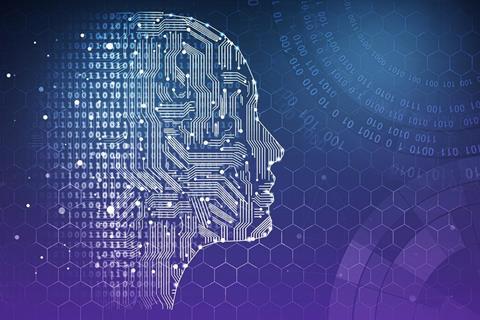Vinayak Shrivastav, CEO & co-founder of VideoVerse, gives his thoughts on the future of AI in the TV industry

Currently, consumers are undergoing a significant change in taste as they switch to watching more short-form videos, best encapsulated in the rise of TikTok. While it is not the number one social media platform, TikTok still has the highest levels of engagement per user. The popularity of TikTok and the many other social platforms like Reels, Remix feature, all of which focus on flip through entertainment to provide quick and immediate gratification, is just the beginning of meaningful change in consumer preferences.
However, video remains a complex technology involving large files and intensive processes such as computing, refining and editing. And in the broadcasting industry, especially – be that sports, news or entertainment – video editors must scour through hours of footage, splicing the most memorable moments into highlights. The traditional editing cycle requires considerable effort, but with AI, broadcasting businesses can automate manual tasks, revolutionizing expensive and time-consuming processes.
Why is there a push for AI in broadcasting?
Many in the broadcasting space – and across industries, in general – adopt AI solutions because of their potential to automate routine workflows. With AI-powered automated editing and management capabilities, businesses will transform their highlight reel creation process. Broadcasters can quickly produce a high volume of concise and engaging video content to match modern consumers’ ever-increasing and evolving appetites. These easy-to-use AI-powered video editing tools can autonomously capture crucial moments from vast swaths of raw footage and repackage them into social-ready videos. Of course, these AI solutions require video editors to set parameters and criteria to specify what types of critical moments to compile, but, overall, these same users will still save lots of time and effort.
The advantages of leveraging AI-powered automation
By leveraging AI, users can automate things like applying filters, adding transitions and re-sizing for social media, allowing broadcasting companies to create bite-sized videos in minutes rather than hours. Likewise, various AI-powered tools help users automatically find suitable content to complement their videos – plus, AI can organize massive amounts of footage much faster than a human while eliminating errors from the video editing process. In fact, the sports broadcasting client of a video technology company that designed an innovative suite of AI-based video editing solutions noted a 95% reduction in editing time and substantial cost savings from workflow automation. Moreover, AI tools for video editing can independently create new versions of existing content or suggest changes to the user. This opens up new revenue streams and allows the content rights holder to get maximum ROI from their content.
Additional benefits of AI in video creation
Perhaps one of the most valuable benefits of AI for broadcasting, baring automation, is its ability to create personalized and more engaging content. AI can increase insights into audiences which will help businesses provide tailored recommendations to keep viewers engaged. Furthermore, AI-powered solutions will empower broadcasters to create new monetization opportunities via sharing video highlights with audiences in real-time, increasing viewership and engagement. Similarly, as mentioned earlier, AI permits greater precision when searching, managing and organizing content, helping companies generate new revenue streams from existing (and sometimes unused) video. And, for AI solutions that utilize a mobile-first approach, broadcasters can effortlessly scale their content for any social media platform or channel to reach many different audiences.
One major misconception: AI will replace humans
Primarily, AI supports and modernizes human efforts – it does not supplant a person’s creative ability or eliminate their thoughtful-decision making. As demonstrated thus far, AI automates repetitive and often mundane tasks, allowing humans to accelerate the overall video editing/creation process and produce higher-quality end products. Likewise, these AI solutions are not all-knowing; they require human input to understand what key moments to clip from the footage, i.e., home runs, soundbites from a news anchor or dramatic moments from a television series. Nevertheless, despite the limitations of AI, it will empower human broadcasters to elevate the quality and output of their video content, thoroughly engrossing the consumers of the modern age.

Vinayak Shrivastav is the CEO and co-founder of VideoVerse, a company that uses AI to automate video editing.
Top Image: Claude AI





























No comments yet